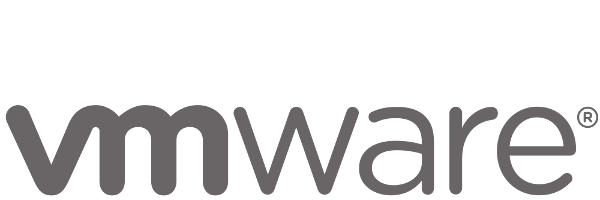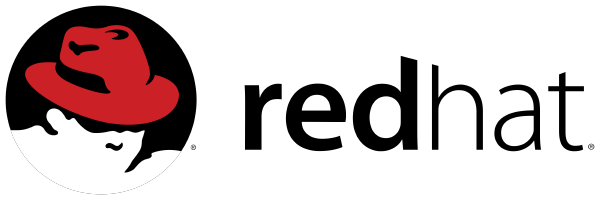Best IT Certification and Training Provider
MICROSOFT | VMWARE | CISCO | LINUX | COMPTIA
Windows Server 2012 / 2016 / 2019 Training

Windows Server 2012 / 2016 / 2019 | Course Description
The MCSA/MCSE Server Infrastructure training and certification allows professionals to swiftly respond to changing requirements of an enterprise’s IT infrastructure. This course offers essential skills required to design and develop comprehensive server infrastructure solutions. Participants enrolled for this course gain expertise in core concepts of Active Directory Domain Management, Group Policy Management, storage, networking, virtualization, systems management, and identity management.
Course Length:
48, 72, 120 Hours
Course Materials:
Official Microsoft Press E-books (4 books)
Course Delivery Format:
70% Hands-on Practical Sessions , 30% Theory using the Microsoft Official Curriculum (MOC) training materials from Microsoft Corporation.
Windows SQL Server 2012/ 2014/ 2016/ 2019 Training

Windows SQL Server 2012/ 2014/ 2016/ 2019 |Course Description
The MCSA/MCSE SQL Server training and certification allows professionals to use a common set of tools to install, query and manage databases both on-premises and in the cloud. The course makes it easier for professionals to do core database administration tasks, restore databases from backups, carry out ongoing database maintenance.Participants are taught on writing queries for Transact-SQL language to interact with their various SQL databases. The training also allow organisations to make mission-critical applications and Big Data solutions using in-memory technology across OLTP, high-performance, business intelligence, data warehousing.
Course Length:
48, 72, 120 Hours
Course Materials:
Official Microsoft Press E-books (3 books)
Course Delivery Format:
70% Hands-on Practical Sessions , 30% Theory using the Microsoft Official Curriculum (MOC) training materials from Microsoft Corporation.
Windows SharePoint Server 2013 / 2016 / 2019 Training
 Windows SharePoint Server 2013 / 2016 / 2019 | Course Description
Windows SharePoint Server 2013 / 2016 / 2019 | Course Description
The Windows MCSE SharePoint Server training and certification provides participant(s) with the maximum insight into farm configuration,performance optimization , manageability, security, service application architecture, high availability, social computing, business intelligence, content management, disaster recovery using the Microsoft official curriculum to equip professionals with the requisite skills to sync, organize, share and collaborate information throughout the organization.
Course Length:
48, 72, 120 Hours
Course Materials:
Official Microsoft Press E-books (2 books)
Course Delivery Format:
70% Hands-on Practical Sessions , 30% Theory using the Microsoft Official Curriculum (MOC) training materials from Microsoft Corporation.
Windows Exchange Server 2013 / 2016 / 2019 Training

Windows SharePoint Server 2013 / 2016 / 2019 | Course Description
The MCSE Exchange Server training and certification imparts skills to install, configure and manage an Exchange Server 2016 deployment. The training also covers advanced topics such as compliance, archiving, site resiliency, security, and discovery solutions, management of public folders and mail recipients, including client connectivity, bulk operations and message transport, execute and manage backup and recovery solutions in highly available Exchange Server environment. Participants will also learn to design Microsoft Exchange Server Architecture Environment. This Exchange Server training will focus on highlighting best practices, guidelines and considerations for optimizing Exchange Server deployments.
Microsoft Client Operating System Training - Windows 10
Contact Us for the official Windows 10 Corporate Training
Microsoft Office Specialist 2013 / 2016 / 2019 Training

Microsoft® Office Specialist 2013 / 2016 / 2019 | Course Description
The Microsoft® Office Specialist (MOS) program for Microsoft Excel 2013 / 2016 or 2019 consist of two major courses: The first course is designed for the absolute beginner and Advanced users in the workplace. The second course is designed for expert users.
Cisco Routing and Switching Training
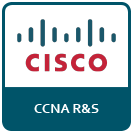
Course Description
The Cisco Certified Network Associate (CCNA) Routing and Switching training and certification will equip participants with core practical skills and knowledge on network fundamentals, LAN switching technologies, IPv4 and IPv6 routing technologies, WAN technologies, infrastructure services, infrastructure security, and infrastructure management.After completing this course, participants will acquire key skills and knowledge to configure, operate, manage and troubleshoot a medium-sized enterprise network, including the ability to ensure security of the network.
Course Length:
40,72 Hours
Course Materials:
Official Cisco Press E-books (3 books)
Course Delivery Format:
70% Hands-on Practical Sessions , 30% Theory based on core concepts defined by Cisco using the offficial cisco training materials.
Cisco Cyber Operations Training

Course Description
The CCNA Cyber Operations training and certification program provides the necessary knowledge needed to start/boost a career in the growing cybersecurity field. This course provides different practices and methods that are used to detect, respond, and defeat cyber threats that could potentially harm an organization. This course is a highly essential program for anyone who is looking to start a career in the cybersecurity field, or for anyone who is working in the cybersecurity field.
Course Length:
40,72 Hours
Course Materials:
Official Cisco Press E-books (2 books)
Course Delivery Format:
70% Hands-on Practical Sessions , 30% Theory based on core concepts designed by Cisco using the offficial Cisco training materials.
Cisco Service Provider Training

Course Description
The CCNA Service Provider course equip the learner with the most recent trends in networking and technologies in Service Provider industry. The course also validates the capability to set up and implement baseline Cisco Service Provider Next-Generation networks.participants will acquire the skills configure to install, execute, manage and troubleshoot Next-Generation Service Provider networks. They will gain proficiency in deploying, maintaining and improving carrier-grade network infrastructures.
Course Length:
40,72 Hours
Course Materials:
Official Cisco Press E-books (2 books)
Course Delivery Format:
70% Hands-on Practical Sessions , 30% Theory based on core concepts designed by Cisco using the offficial Cisco training materials.
Cisco Network Design Training

Course Description
The Cisco Certified Design Associate(CCDA) training and certifcation is designed to equip participants with the knowledge of network design for the Cisco converged networks based on the Cisco’s Service-Oriented Network Architecture(SONA). The Cisco CCDA focuses on design methodologies, addressing and routing protocols, network expansion considerations within basic campus, data center, security, voice, and wireless networks. After completion, participants wiil be able to design routed and switched network infrastructures and services involving LAN, WAN, and broadband access for businesses and organizations.
Course Length:
40,72 Hours
Course Materials:
Official Cisco Press E-books (2 books)
Course Delivery Format:
70% Hands-on Practical Sessions, 30% Theory based on core concepts defined by Cisco using the offficial cisco training materials.
Cisco Collaboration Training

Course Description
The CCNA Collaboration training and certification program provides the necessary knowledge needed to implement various Cisco Video endpoints in converged Cisco video infrastructures. The course also enables the participants to implement, maintain and troubleshoot Cisco Unified Communication (UC) and Collaboration solutions, TelePresence, and Digital Media Player in different Cisco business video solution architectures.
Course Length:
40,72 Hours
Course Materials:
Official Cisco Press E-books (2 books)
Course Delivery Format:
70% Hands-on Practical Sessions , 30% Theory based on core concepts designed by Cisco using the offficial Cisco training materials.
Cisco Data Center Training

Course Description
The CCNA Data Center training and certification program provides the necessary knowledge of fundamental data center technologies including unified computing, data center network virtualization, Cisco data center networking technologies, data center automation and orchestration, and Application Centric Infrastructure. This course also test the learner’s knowledge of data center physical infrastructure, data center networking concepts, and data center storage networking.
Course Length:
40,72 Hours
Course Materials:
Official Cisco Press E-books (2 books)
Course Delivery Format:
70% Hands-on Practical Sessions , 30% Theory based on core concepts designed by Cisco using the offficial Cisco training materials.
Cisco Wireless Training

Course Description
The Cisco Certified Network Associate Wireless (CCNA Wireless) training and certification will prepare the potential wireless network associate for the use, positioning, planning, implementation and operation of Cisco WLAN networks. The training focuses on Radio Frequency (RF) and 802.11 technology essentials along with installing, configuring, monitoring and basic troubleshooting tasks needed to support Small Medium Business(SMB) and Enterprise wireless networks. The associate after completing wil be able to design, install, configure, monitor and conduct basic troubleshooting tasks of a Cisco WLAN in SMB and Enterprise installations.
Course Length:
40,72 Hours
Course Materials:
Official Cisco Press E-books (2 books)
Course Delivery Format:
70% Hands-on Practical Sessions , 30% Theory based on core concepts defined by Cisco using the offficial cisco training materials.
Cisco Security Training
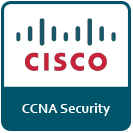
Course Description
A CCNA Security certification provides the ability to develop a security infrastructure using Cisco network devices – acquire skills to install and monitor network devices; recognize and control threats to the security structure. This CCNA Security course endeavors to deliver the core security concepts, VPN encryption, understand the secure access management, firewall, intrusion prevention, endpoint security along with the email and web security. Participants will learn to install, troubleshoot and monitor the secure networks so as to maintain the confidentiality, availability of devices and data and integrity through this CCNA Security certification training.
Course Length:
40,72 Hours
Course Materials:
Official Cisco Press E-books (2 books)
Course Delivery Format:
70% Hands-on Practical Sessions , 30% Theory based on core concepts defined by Cisco using the offficial cisco training materials.
VMware vSphere® 6.0, 6.5, 7.0 Data Center Virtualization - Fundamentals

Course Description
VMware Data Center Virtualization training course is design to be fundamental introducton to hardware virtualization for participants seeking to enter into virtualization field. The course starts by providing an overview of Data Center Virtualization in the business world, then Data Center Virtualization with VMware vSphere®,components of VMware vSphere®, capabilities of the VMware vSphere®, and benefits of using VMware vSphere®. Finally, participants will see how vSphere® 6.5,7.0 products help resolve common data center challenges.
Course Length:
24 Hours
Course Duration:
Bootcamp -> 5 days
Course Materials:
Official VMware vSphere® Training E-books (1 book)
Course Delivery Format:
70% Hands-on Practical Sessions , 30% Theory based on core concepts defined by VMware using the official VMware training materials.
VMware vSphere® 6.0, 6.5, 7.0 Data Center Virtualization - System Administration

Course Description
This course is an intensive hands-on training that focuses on installing, configuring, and managing VMware vSphere®, which includes VMware ESXi™ and VMware vCenter Server® .This course prepares the participant to administer a vSphere® infrastructure for an organization of any size. It is the foundation for most other VMware technologies in the software-defined data center.This course comes in two parts, the part one is fundamental to VMware vSphere® Administration.
Course Length:
40 Hours
Course Duration:
Bootcamp -> 5 days || Custom Track -> 10 days
Course Materials:
Official VMware vSphere® Training E-books (1 book)
Course Delivery Format:
70% Hands-on Practical Sessions , 30% Theory based on core concepts defined by VMware using the official VMware training materials.
VMware vSphere® 6.0, 6.5, 7.0 Data Center Virtualization - Expert

Course Description
Our VMware Data Center Virtualization – Expert Training course equips you with maximum knowledge, skills, and abilities to design and deploy a VMware vSphere® virtual infrastructure that features highly availability, scalability, manageability, and security. Participants will also learn to Design and deploy storage and networking infrastructures for an organization as well as follow VMware Corporation recommendations when designing virtual networks.
Course Length:
40 Hours
Course Duration:
Bootcamp -> 5 days || Custom Track -> 10 days
Course Materials:
Official VMware vSphere® Training E-books (1 book)
Course Delivery Format:
70% Hands-on Practical Sessions , 30% Theory based on core concepts defined by VMware using the official VMware training materials.
Comptia A+ Technician Training

Course Description
CompTIA A+ is the preferred qualifying credential for technical support and IT operational roles. It is about much more than PC repair. Candidates are better prepared to troubleshoot and problem solve. Technicians understand a wide variety of issues ranging from networking and operating systems to mobile devices and security.The training covers mobile devices, networking technology, hardware, virtualization and cloud computing and network troubleshooting. It also covers installing and configuring operating systems, expanded security, software troubleshooting and operational procedures.
Course Length:
30 Hours
Course Duration:
Bootcamp -> 4 days
Course Materials:
Official CompTIA A+ Training E-book (1 book)
Course Delivery Format:
70% Hands-on Practical Sessions , 30% Theory based on core concepts defined by CompTIA using the offficial CompTIA PenTest+ training materials.
Comptia Security+ Training
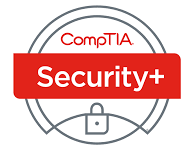
Course Description
The CompTIA Security+ exam will certify the successful candidate has the knowledge and skills required to install and configure systems to secure applications, networks, and devices; perform threat analysis and respond with appropriate mitigation techniques; participate in risk mitigation activities; and operate with an awareness of applicable policies, laws, and regulations. The successful candidate will perform these tasks to support the principles of confidentiality, integrity, and availability. .
Course Length:
24 Hours
Course Duration:
Bootcamp -> 4 days
Course Materials:
Official CompTIA Security+ Training E-book (1 book)
Course Delivery Format:
70% Hands-on Practical Sessions , 30% Theory based on core concepts defined by CompTIA using the offficial CompTIA Security+ training materials.
Comptia Network+ Training

Course Description
CompTIA Network+ helps develop a career in IT infrastructure covering troubleshooting, configuring, and managing networks. .
Course Length:
24 Hours
Course Duration:
Bootcamp -> 4 days
Course Materials:
Official CompTIA Network+ Training E-book (1 book)
Course Delivery Format:
70% Hands-on Practical Sessions , 30% Theory based on core concepts defined by CompTIA using the offficial CompTIA Network+ training materials.
Comptia Pentest+ Training

Course Description
CompTIA PenTest+ assesses the most up-to-date penetration testing, and vulnerability assessment and management skills necessary to determine the resiliency of the network against attacks.Successful candidates will have the intermediate skills required to customize assessment frameworks to effectively collaborate on and report findings.Candidates will also have the best practices to communicate recommended strategies to improve the overall state of IT security.
Course Length:
30 Hours
Course Duration:
Bootcamp -> 4 days
Course Materials:
Official CompTIA PenTest+ Training E-book (1 book)
Course Delivery Format:
70% Hands-on Practical Sessions , 30% Theory based on core concepts defined by CompTIA using the offficial CompTIA PenTest+ training materials.
Comptia Linux+ Training

Course Description
CompTIA Linux+ validates the competencies required of an early career system administrator supporting Linux systems.CompTIA Linux+ validates the skills of IT professionals with hands-on experience configuring, monitoring, and supporting servers running the Linux operating system. The course focus on the following linux topics: security, kernel modules, storage & visualization, device management at an enterprise level, git & automation, networking & firewalls, server side & command line, server (vs. client-based) coverage, troubleshooting and SELinux. .
Course Length:
24 Hours
Course Duration:
Bootcamp -> 4 days
Course Materials:
Official CompTIA Linux+ Training E-book (1 book)
Course Delivery Format:
70% Hands-on Practical Sessions , 30% Theory based on core concepts defined by CompTIA using the offficial CompTIA Linux+ training materials.
CompTIA CySA+ Training

Course Description
The CompTIA CySA+ is an international, vendor-neutral certification that validates the skills required to combat malware and threats through the application of behavioral analytics. The participant undertaking this cousrse will have the knowledge and skills required to Perform data analysis and interpret the results to identify vulnerabilities, threats, and risks to an organization,Configure and use threat detection tools, Secure and protect applications and systems within an organization. The cySA+ course covers 4 domains which are Threat Management, Vulnerability Management, Cyber Incident Response and Security and Architecture Tool Sets.
Course Length:
30 Hours
Course Duration:
Bootcamp -> 4 days
Course Materials:
Official CompTIA CySA+ Training E-book (1 book)
Course Delivery Format:
70% Hands-on Practical Sessions , 30% Theory based on core concepts defined by CompTIA using the offficial CompTIA CySA+ training materials.
Redhat Certified System Administrator (RHCSA) Training

Course Description
The RHCSA exams allows you to demonstrate your ability to configure live physical and virtual systems for networking , security, custom filesystems, package updates, user management and more. It covers skills required to configure and administer a Linux workstation in the enterprise..
Course Length:
40 Hours
Course Duration:
Bootcamp -> 4 days
Course Materials:
Official Redhat RHCSA E-book (1 book)
Course Delivery Format:
70% Hands-on Practical Sessions , 30% Theory based on core concepts defined by Redhat using the offficial Redhat RHCSA training materials.
Redhat Certified Engineer (RHCE) Training

Course Description
The RHCE exams tests your ability to configure live physical and virtual servers, running network services such as Apache , MariaDB, the NFS, Samba, iSCSI targets and more. It also test your ability to handle complex configuration options associated with Security Enhanced Linux(SELinux), firewalls, networking and more. The participant will acquire the skills to manage Linux in an Enterprise environment .
Course Length:
40 Hours
Course Duration:
Bootcamp -> 4 days
Course Materials:
Official RHCE Training E-book (1 book)
Course Delivery Format:
70% Hands-on Practical Sessions , 30% Theory based on core concepts defined by Redhat using the offficial Redhat RHCE training materials.
Free Consultation or Enquiry - Contact Us Now!
About Us
Works & Testimonials
What We Do
Contact Us
Location Address
145 Rue no. 5447 Quartier Dembe, 7th Arrondissement, Ndjamena.
Telephone
+233 570 716622 (WhatsApp )


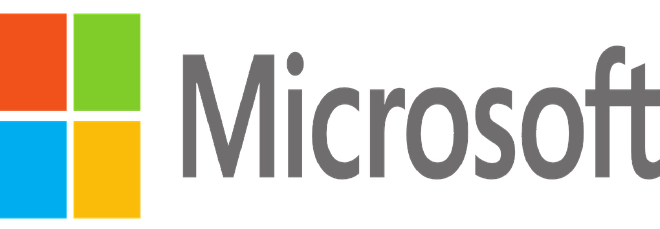
 Windows SharePoint Server 2013 / 2016 / 2019 | Course Description
Windows SharePoint Server 2013 / 2016 / 2019 | Course Description





